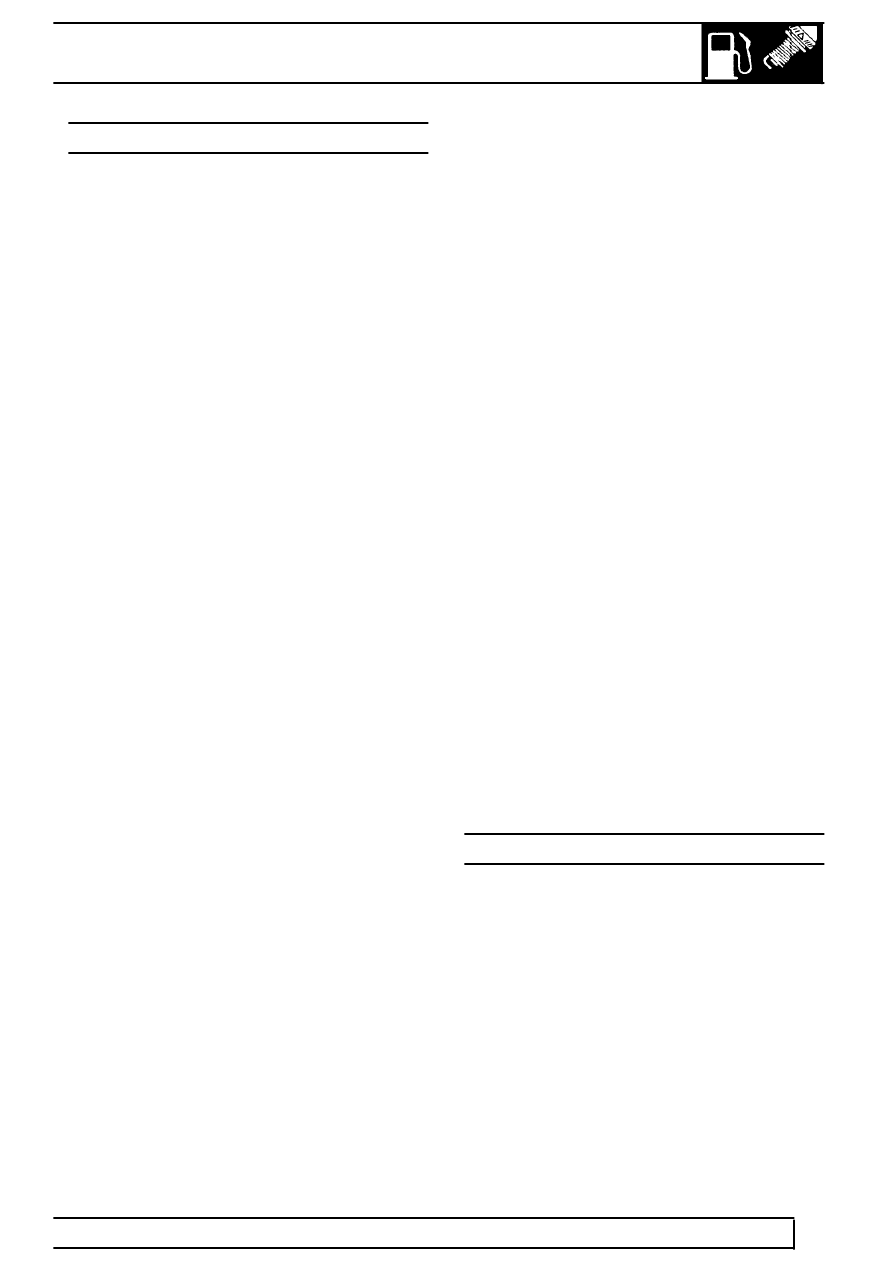Range Rover P38

CRUISE CONTROL
1
DESCRIPTION AND OPERATION
DESCRIPTION - V8
The cruise control system consists of
electro-mechanical devices and comprises of the
following components.
Electronic Control Unit (ECU)
The microprocessor based ECU evaluates the signals
received from the driver controls, BeCM (vehicle
speed signal), brake pedal switch and clutch pedal
switch on manual vehicles. The ECU activates a
vacuum pump as required. The ECU has a memory
function to store desired cruise speed. The memory is
cleared when power to the cruise ECU is cut, i.e.
when the main cruise control switch is turned off.
Driver operated switches
The driver controls cruise operation from 3 switches.
The main cruise control switch is located on the centre
switch pack and activates the cruise control system. 2
further switches are located in the steering wheel.
’Set/+’ informs the ECU of the required cruise speed.
’Res’ temporarily switches cruise control off but
retains the previously set cruise speed. Pressing ’Res’
a second time resumes the previously selected cruise
speed.
Vehicle speed signal
The cruise control ECU receives a road speed signal
from the BeCM, which in turn receives the signal from
the ABS ECU. The cruise control ECU compares the
road speed signal with the required cruise speed and
adjusts the output to the vacuum pump as necessary.
Cruise control will not operate below the low speed
threshold of 28 mph or above the high speed
threshold of 125 mph.
Brake pedal switch
The vehicle utilised 2 brake pedal switches, mounted
on the pedal box. One switch is normally closed with
the brake pedal released while the other is normally
open. The normally closed switch also incorporates a
vent valve to rapidly deplete actuator vacuum when
cruise control is disengaged. When the brake pedal is
pressed, the signal from each brake switch is
monitored by the cruise control ECU which switches
the vacuum pump off.
Clutch pedal switch
The clutch pedal switch is located on the pedal box
and is identical to the previously described brake
pedal switch with vent valve.
Vacuum pump
When cruise control is active and cruise ECU inputs
are acceptable, the ECU energises the vacuum pump
motor. The vacuum pump creates a vacuum in the
actuator which operates the throttle linkage. When the
required speed has been achieved, the ECU switches
off the vacuum pump. The ECU also controls a dump
valve which allows system vacuum to vent to
atmosphere.
Actuator
The actuator provides the servo mechanical link
between the cruise control system and the throttle
linkage.
Neutral lock-out - automatic vehicles
Cruise control is disengaged when neutral or park is
selected in the main gearbox. The cruise control ECU
receives a signal from the BeCM.
Engine overspeed - manual vehicles
Cruise control is disengaged if the engine speed
exceeds 5000 rpm. The cruise control ECU receives
the engine speed signal from the BeCM.
DESCRIPTION - DIESEL
Diesel vehicles utilise the electronic diesel control
(EDC) system for cruise control. As the EDC has
complete control of the fuelling system, the only
additional inputs required for cruise control are, driver
controls, vehicle speed, brake and clutch signals. The
individual components are as previously described by
V8 vehicles.
